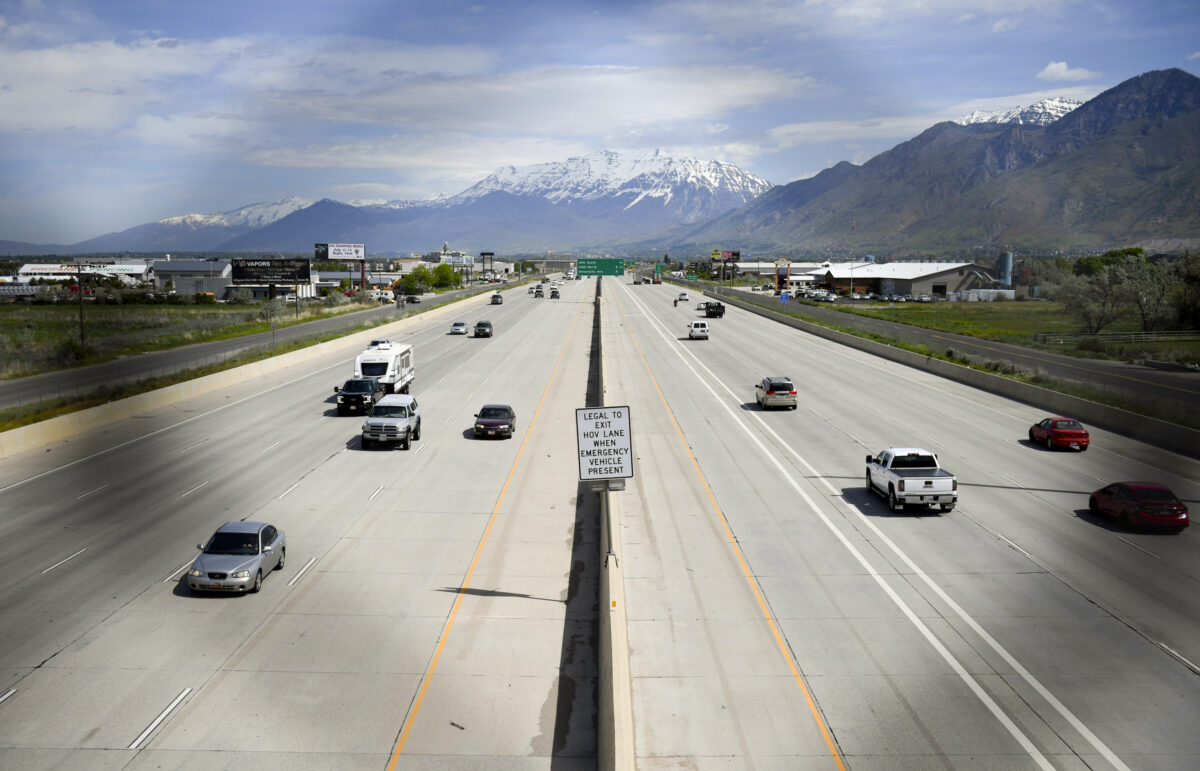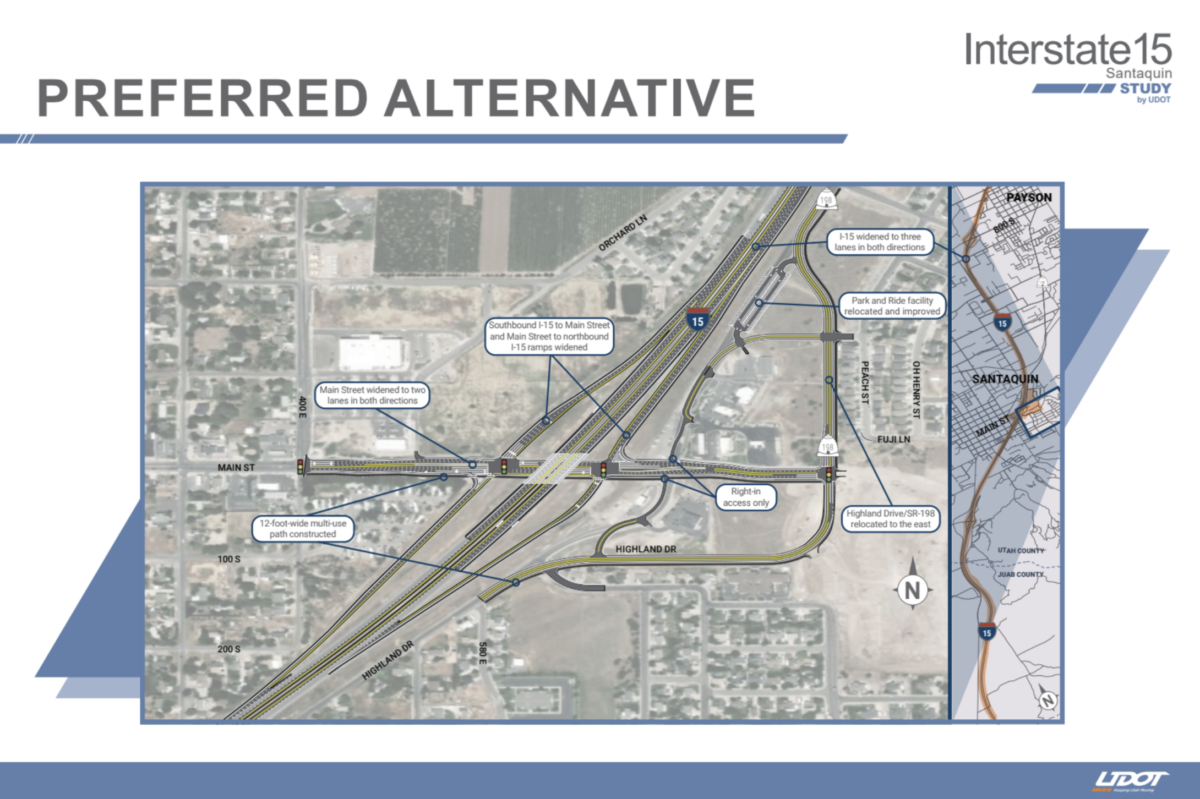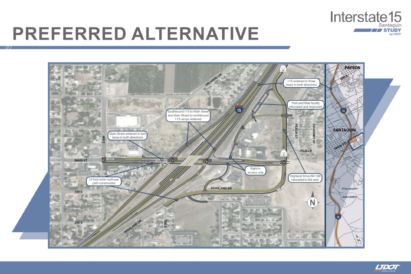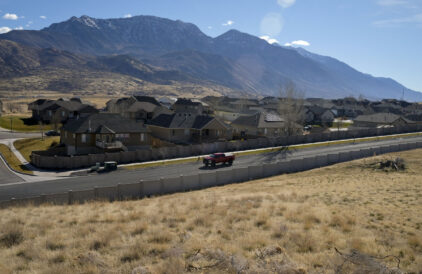UDOT suggests adding lane to I-15 in southern Utah County, improving Santaquin interchange
- Traffic flows along Interstate 15 as seen from a bridge along 1600 South in Springville on Wednesday, May 15, 2019.
- The Utah Department of Transportation has revealed its preferred alterations to the Interstate 15 interchange in Santaquin.
- A truck drives along a road in the Summit Ridge neighborhood of Santaquin on Wednesday, Nov. 22, 2017.
Efforts to address growing traffic concerns in Santaquin and the Interstate 15 corridor through southern Utah County are moving forward.
The Utah Department of Transportation commenced an environmental study last year to evaluate how to improve congestion issues at the I-15 and Main Street interchange in Santaquin, as well as on I-15 between Payson and Rocky Ridge.
The study’s findings were presented to residents in a public hearing Thursday night at Santaquin City Hall.
The plan calls to add additional lanes to I-15 in each direction from Wash Canyon Road in Juab County to Utah Avenue in Payson to address the high volume of traffic the section often can accumulate.
In Santaquin, UDOT suggests widening Main Street from one to two lanes and relocating Highland Drive to the east to open up space for the interchange. On the interchange, the preference is to keep the existing diamond layout but to increase the capacity of the overpass and ramps and add a traffic light to both.
“(Adding) one lane in each direction on I-15 works and serves the demand out to 2050,” said Eric Rasband, UDOT’s project manager for the environmental study. “For the interchange itself, we looked at four different concepts, and ultimately I settled on a very similar configuration to what it is today, which is a diamond, just with more lanes.”
Built in 1967, the Santaquin Main Street interchange was designed to accommodate 12,000 cars per day, according to UDOT. But in 2023, the interchange handled 18,000 cars per day, creating excessive congestion.
Santaquin Mayor Dan Olson says the current infrastructure creates safety issues and also impacts the local economy, because business owners reportedly view the interchange as a “pinch point” that deters them from developing in commercial areas on the east side of the city.
the population in Utah and Juab counties is expected to grow by more than 60% by the year 2050, according to the Kem C. Gardner Policy Institute, bringing more urgency to the issue.
“Currently, the congestion on a typical travel day extends at least halfway through town. If we don’t do anything, it goes all the way through town,” Rasband said. “If we do this, by the year 2050, that congestion we’re experiencing today is not projected to be observed. Delays go from multiple minutes, multiple light cycles, to 20-30 seconds.”
Santaquin has come a long way in a short amount of time to bring these issues to the forefront.
When city officials got to work three years ago to convince the state to update the interchange, Olson said he was told by the district’s engineering heads it would take 30 years before they could examine the problem.
“I left that meeting and said, ‘Not if I can find a way to get around this, because that’s way too long. We just can’t handle it,'” Olson said.
From there, he began meeting with legislators who represent portions of the city, including Utah House member Doug Welton and Sens. Mike McKell, Darrin Owens and David Hinkins, and they brought attention to the issue.
With the support of the Legislature and Gov. Spencer Cox, the state put $5 million toward researching the project. Then, according to Olson, the transportation commission awarded the project an extra $19.5 million to look at adding a lane on the freeway, and UDOT’s study commenced at the end of last year.
Dozens of Santaquin residents attended Thursday’s meeting to view UDOT’s findings. Rasband said there was “quite a bit of support” for the proposals. Going forward, UDOT will address any public comments then hopes to publish a decision document to determine what to do in early 2025.
However, getting funding for the project may take some time.
“We’re currently programmed out to the year 2030,” Rasband said. “So if new funding was to come in, likely improvements would be after that time.”
“In the last three years, we’ve gone from, ‘We’ll see you in 30 years,’ to, ‘We’re looking at getting this funded,'” Olson added. “When that time frame hits, I absolutely don’t know, but I work on it all the time, as well as everything else in this city.”








